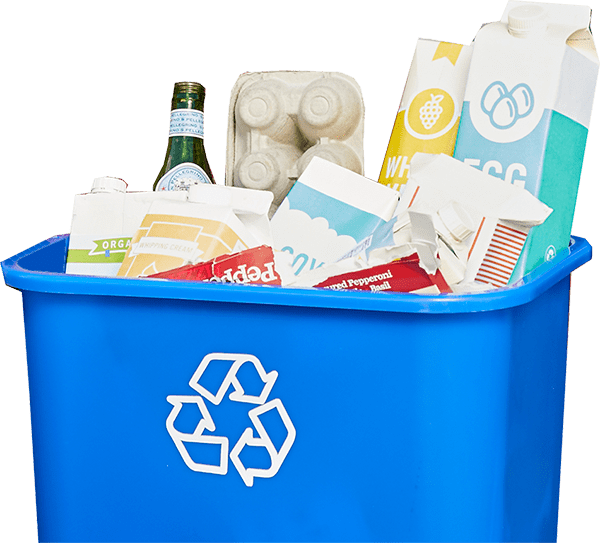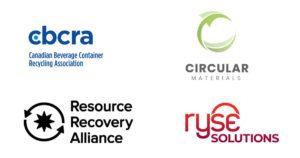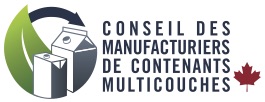Summer 2022 Newsletter
Volume 9, Issue 1
Ontario Blue Box Reform: Here’s What the PROs Are Up To, and How They Plan to Support Carton Recycling
 It’s far from an overstatement to say that the development of Ontario’s new Extended Producer Responsibility (EPR) Blue Box program is a complex affair. To inject an element of competition, provincial policy makers encouraged the participation of multiple producer-responsibility organizations (PROs) in the new system, which is now scheduled to begin gradual deployment in little more than a year. Three full-service PROs have consequently thrown their hats into the ring: Circular Materials Ontario (CMO), Resource Recovery Alliance (RRA) and RYSE Solutions, who are now called upon to collaborate. A fourth, supplementary PRO, Canadian Beverage Container Recycling Association (CBCRA), is also part of the picture to assist with the out-of-home collection of beverage containers.
It’s far from an overstatement to say that the development of Ontario’s new Extended Producer Responsibility (EPR) Blue Box program is a complex affair. To inject an element of competition, provincial policy makers encouraged the participation of multiple producer-responsibility organizations (PROs) in the new system, which is now scheduled to begin gradual deployment in little more than a year. Three full-service PROs have consequently thrown their hats into the ring: Circular Materials Ontario (CMO), Resource Recovery Alliance (RRA) and RYSE Solutions, who are now called upon to collaborate. A fourth, supplementary PRO, Canadian Beverage Container Recycling Association (CBCRA), is also part of the picture to assist with the out-of-home collection of beverage containers.
 To try to shed some light on this fast-evolving file for the benefit of carton users (that is, food and beverage producers that package their goods in gable top or aseptic cartons) and recycling-sector partners in Ontario and across Canada—and admittedly for ourselves as well! —Carton Council of Canada recently reached out to the four organizations. All were kind enough to take some time from their busy schedules to answer our questions. Here’s some of what we learned.
To try to shed some light on this fast-evolving file for the benefit of carton users (that is, food and beverage producers that package their goods in gable top or aseptic cartons) and recycling-sector partners in Ontario and across Canada—and admittedly for ourselves as well! —Carton Council of Canada recently reached out to the four organizations. All were kind enough to take some time from their busy schedules to answer our questions. Here’s some of what we learned.
While the PROs must work together to design and eventually run a common collection system, they will be competing on what happens to materials once collected and how to service producers. Carton users, like all other producers, must therefore choose one of the PROs to fulfill their new recycling obligations in the province. Each of the three main PROs presents a slightly different offer to meet those needs. Circular Materials, for instance, highlights its not-for-profit, producer-led model; RRA, the depth of the experience of its staff with EPR programs across Canada; and RYSE, its personalized approach that’s particularly well suited to small and mid-sized producers. Each is currently still in the process of signing up producers and more information on everything they bring to the table is available on their websites. CBCRA, however, is a bit different on that front. Through a partnership with CMO, beverage producers that sign up with the latter are automatically represented by CBCRA as well.
CMO will submit an “Initial Report” to Ontario’s regulator, the Resource Productivity and Recovery Authority (RPRA), that will outline the set-up of the new system. The report due July 1 will contain a plan for the collection of Blue Box materials at sites mandated by the new regulation (called “eligible sources”), which include residences, schools and specified public places, like certain municipal parks and playgrounds. The new system is scheduled to be fully operational by the end of 2025. To ensure the collection of recyclables remains unaffected during the transition, contracts will be offered to municipalities to continue to offer their services until that point.
In addition to participating in meeting recovery targets for five broad material categories (paper, rigid plastic, flexible plastic, glass and metal), beverage producers will have to collectively achieve a 75% recovery rate for their containers, including cartons, between 2026 and 2029, and 80% beyond that point. To meet those objectives, beverage producers have realized they will need to arrange collection at other sites beyond the mandated eligible sources. CBCRA will be responsible for ensuring collection of these containers from non-regulated public spaces (e.g., pools and municipal buildings) as well as from private locations such as theme parks, sports venues, and businesses.
Other details concerning cartons are still sparse at this time. In general, we reassuringly took away from our exchanges that food and beverage cartons of all sizes would receive the same level of attention from the PROs as any other type of recyclable container. We’ve also received assurances that cartons will be featured on the harmonized materials list which will come into effect in 2026. This would mean that all types of cartons will be accepted for recycling from all eligible sources in the province. In the meantime, municipalities will continue to determine what residents can put into their blue boxes. Currently, a handful still unfortunately don’t accept cartons. As for sorting, the indications at this time are that PROs will likely require materials recovery facilities (MRFs) to produce dedicated carton bales, which allow for cartons’ optimal recycling, although this still needs to be confirmed.
Once the collection system has been arranged, other steps will follow quickly in view of next year’s launch. The main PROs will undertake joint promotion and education activities as part of the common collection system. On its end, CBCRA will conduct its own initiatives to support meeting beverage container targets and has already begun planning a province-wide awareness campaign that will include cartons. As the PROs are individually responsible for the other aspects of the Blue Box program after collection, each will need to procure the required sorting services from MRFs. Then will come arrangements with end markets for the materials’ actual recycling. CMO even alluded to the possibility of collaborations with counterparts in other provinces to favour domestic recyclers. One thing’s for certain, the months ahead continue to promise a flurry of activity.
Contents
- New Funding Program Launched to Reinvigorate Carton Recycling in Ontario — Blue Box Reform Presents Opportunity
- Ontario Blue Box Reform: Here’s What the PROs Are Up To, and How They Plan to Support Carton Recycling
- MRF Profiles: City of Kingston, City of Peterborough
- Carton Council of Canada Launches 2022 Community Education Award in Quebec
- EcoSchools Canada and Carton Council Canada Partner on Carton Recycling Video

